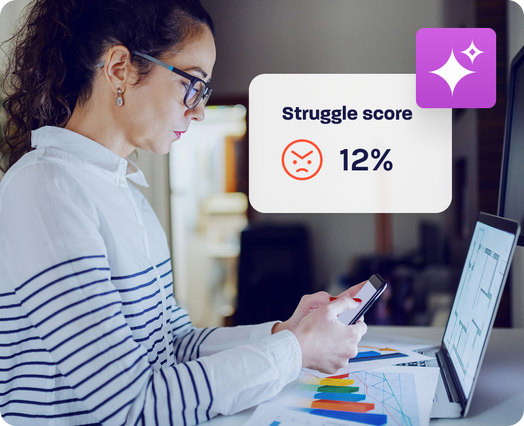
The digital customer experience is different on web vs. mobile app
By now, it’s a well-known fact that users tend to interact differently with a business’s website versus their mobile app. We can even make some generalizations: on mobile, users tend to be on the go and more task-oriented, while web users, probably seated with a laptop or at a desktop, are more likely to be browsing or researching. But you can’t create the perfect customer experience just based on generalizations alone. You need to learn how your customers use your website and your mobile app.
When it comes to capturing and analyzing the digital customer experience, choose a solution that supports both mobile apps and web, so that you can easily compare the two. This will help you not only identify how users engage with both platforms, but importantly, when and why they switch between them.
Why do users make the switch?
While you will always have some customers who only engage with you on web or mobile, many will engage with you on both, based on whichever device is most convenient for them when they think of you. And among mobile customers, some will prefer to visit your website on their device rather than installing your app. Even those who have your app installed may choose to switch to viewing the mobile version of your website within a single mobile customer journey. Identifying when and why they choose to do so can tell you a lot about both your website and your mobile app.
For instance, if you notice that customers frequently use your app to look up information about your products without completing a purchase, it may suggest that there is something about your mobile shopping cart or checkout page that is giving users pause.
On the other hand, if you see a number of users switching frequently back and forth between your mobile app and your website, it could suggest that they’re looking for information which isn’t easy to find on either platform. Pay attention to what pages or screens they visit when this happens, whether they’re using the search function on your site, and any other clues that might show you what they’re looking for and failing to find. Research from Google has shown that more than 33% of users will go to another company’s site or app if they can’t find the info they’re looking for on yours, so it’s imperative that you address this customer struggle when it arises.
Optimizing digital platforms to best serve your customers
Once you understand how your customers are using your website and mobile app, you can tailor each platform to give the best customer experience. It’s not about changing your website to make it more appealing to app users, or vice versa. It’s about leaning in to what your customers need and want, and giving them even more of what they already love. It’s about smoothing over their pain points and making a better experience.
You can truly improve your customers’ sentiment to your brand by linking both on- and offline touchpoints. Think about how your mobile app or website can enhance an in-person shopping experience. Consider making your app convenient for looking up product information, checking stock at other nearby stores, and seeing customer reviews while they are in the store. You can also streamline their shopping experience by having your app tell them exactly what aisle and shelf holds the item they’re looking for, or by making it easier to set up a curbside pickup—an increasingly important service in 2020.
Every app or website session replay and journey can teach you more about how your customers engage with your brand. Whether viewing sessions individually, or using big data analytics to identify trends within your user base, having access to every data point is crucial to ensure you’re not missing something important about the way people use your website and app.
Want a deeper understanding of linking digital experiences across channels? Read our white paper Digital Customer Journey Mapping in Today’s World.








